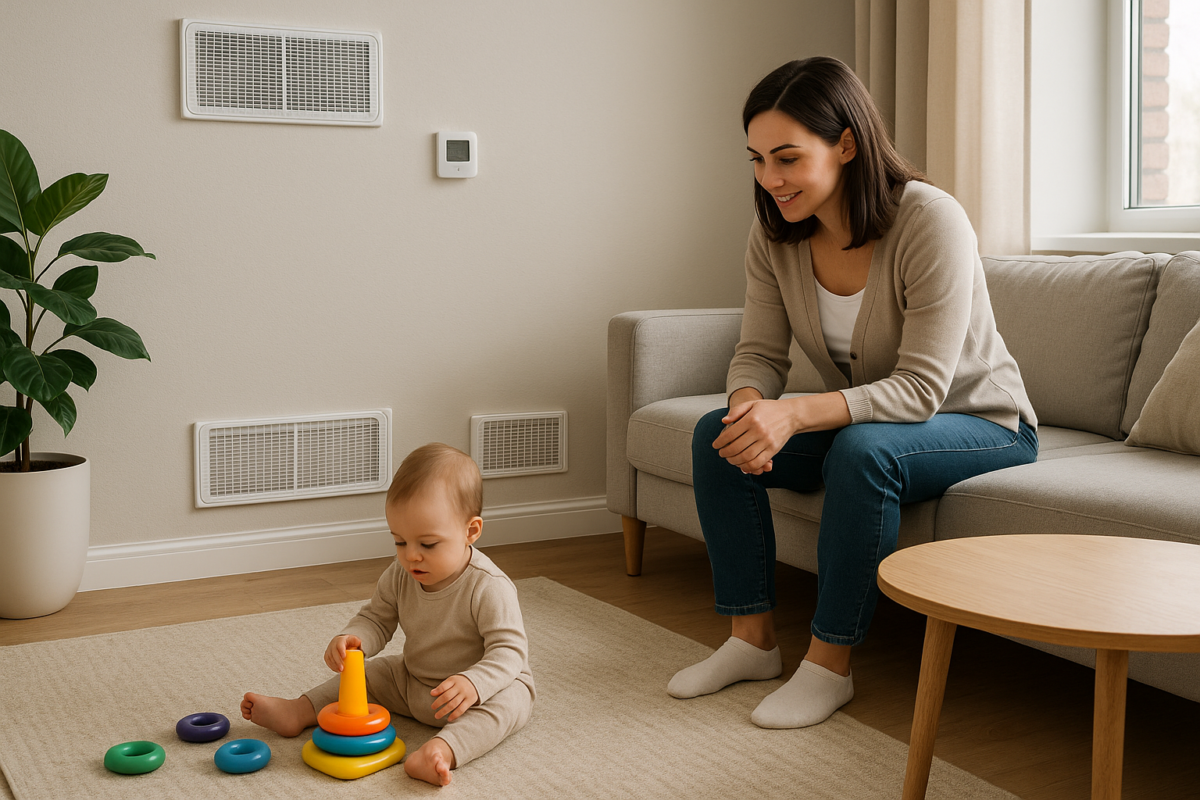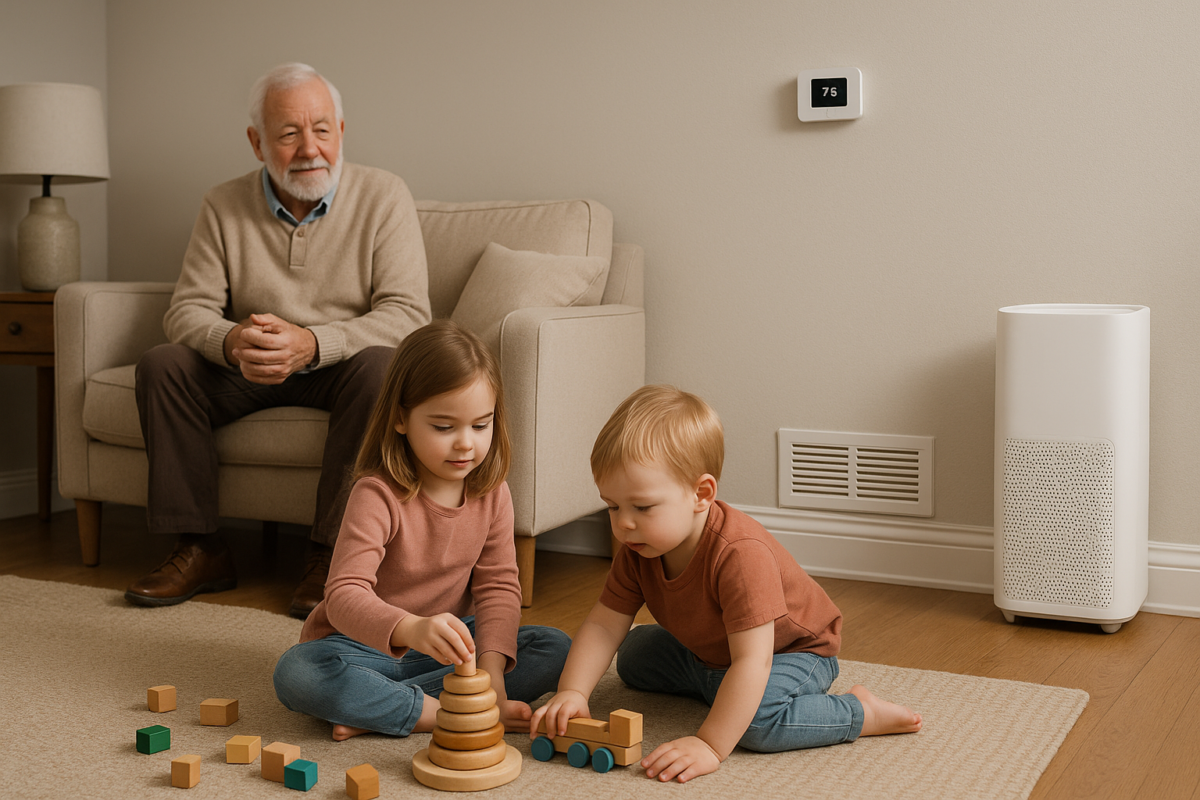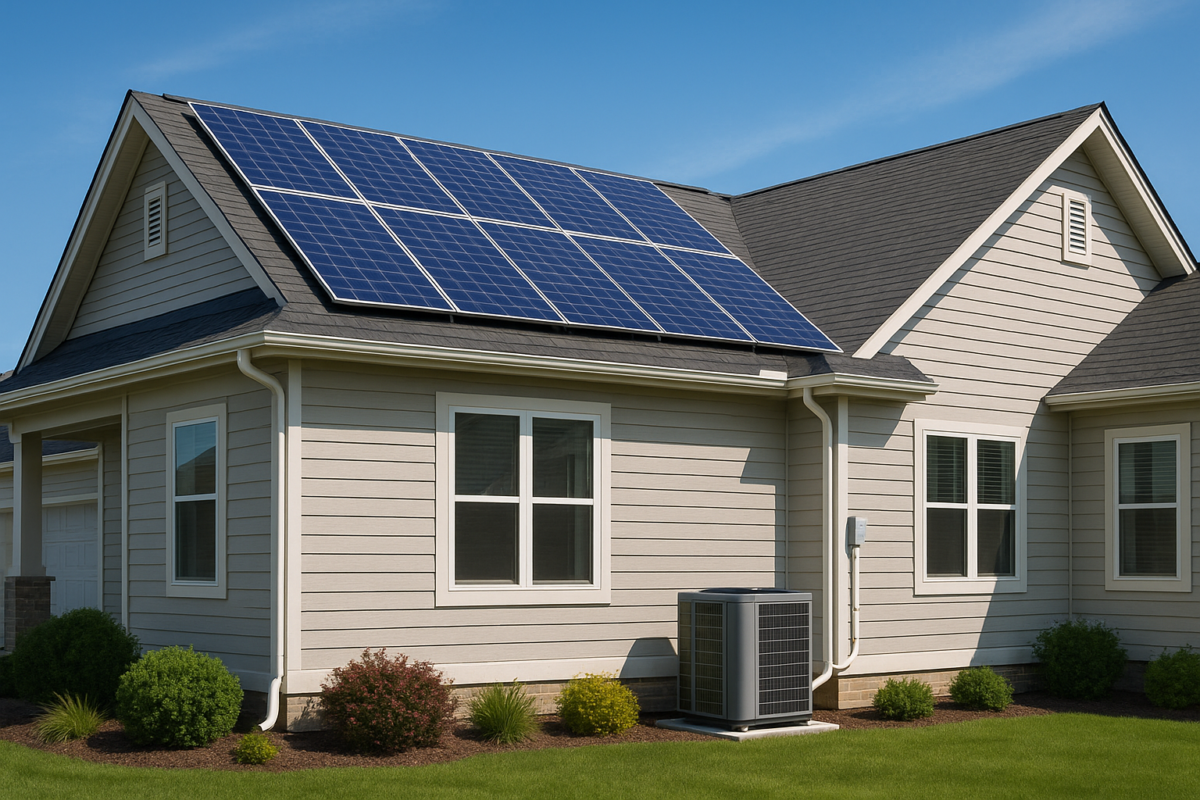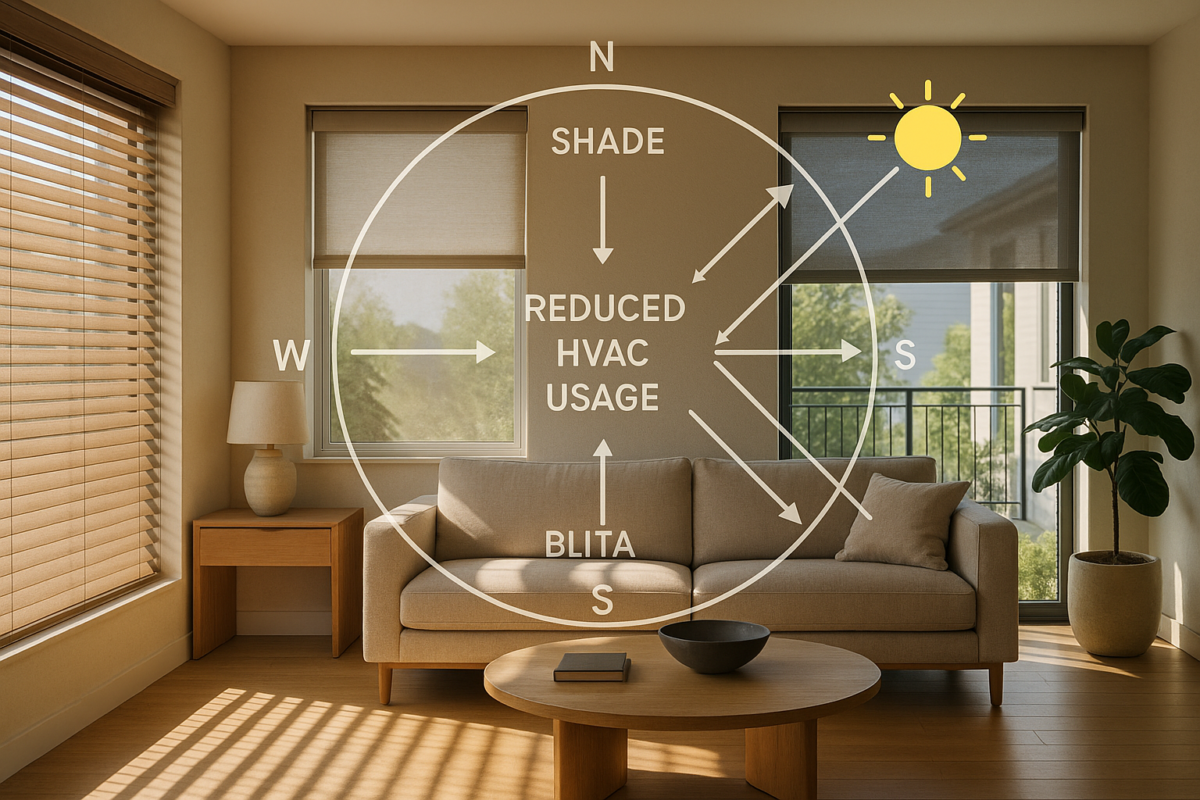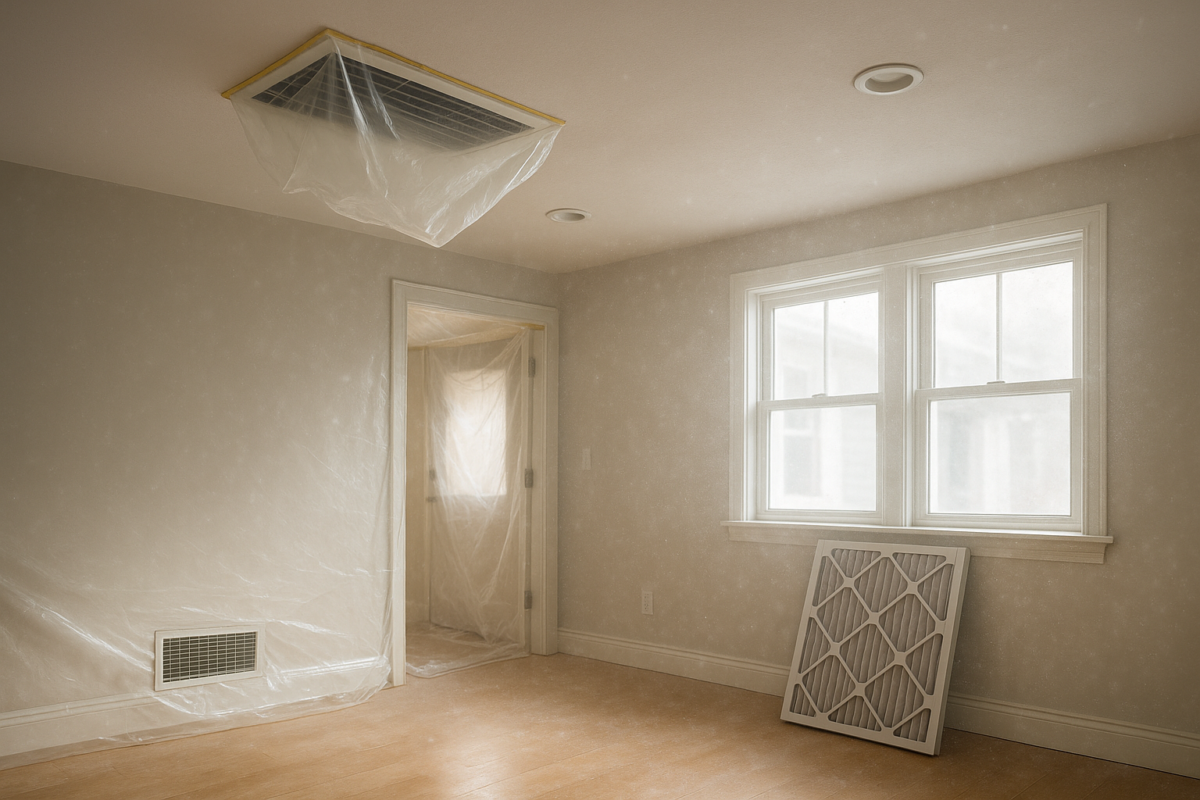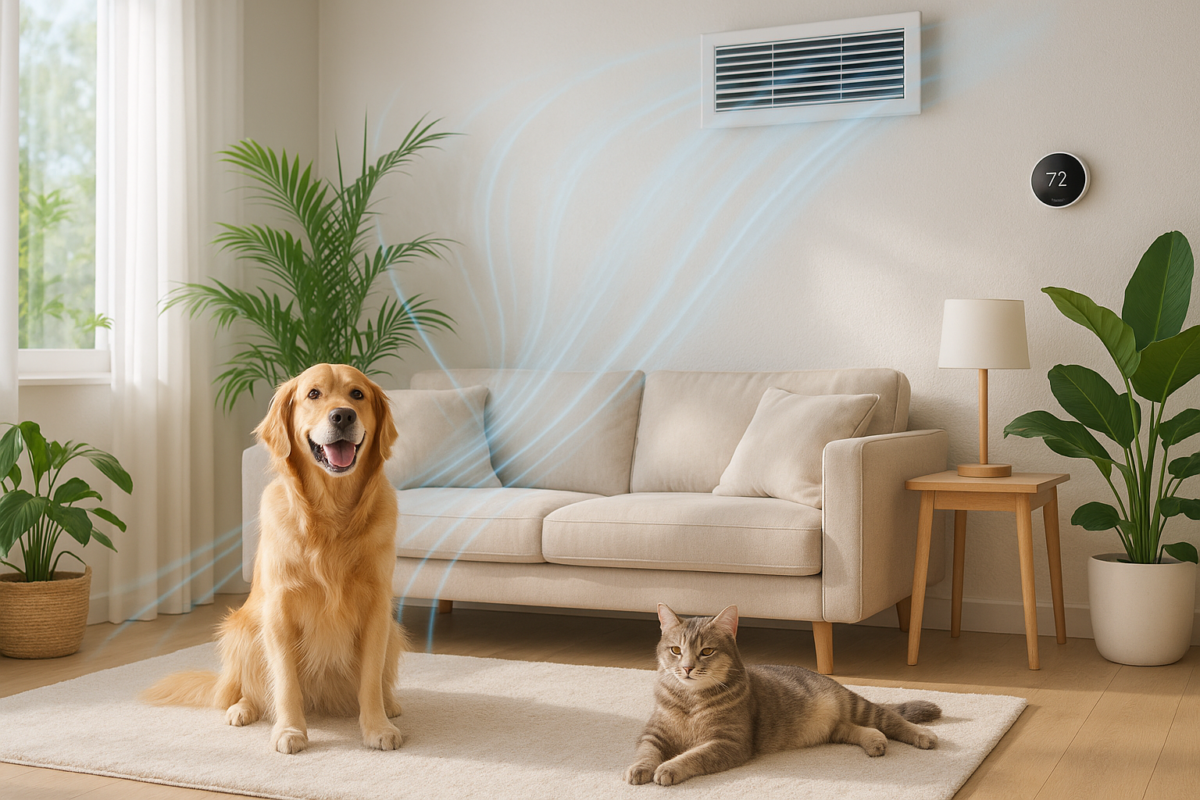Childproof HVAC Tips for a Safe Home with Kids
Young children possess endless curiosity. Every parent learns to anticipate sticky fingerprints, toys tossed into unlikely spots, and little hands reaching for anything within sight. In homes with heating and cooling systems, this natural curiosity can become a real safety concern. Sharp metal, electrical parts, open vents, and temperature controls all become sources of worry for watchful adults. That concern is valid. Unsafe HVAC setups have caused accidental burns, finger injuries, and even electrical harm when left unchecked. The great news is that with deliberate planning, parents can create a safer environment. This article details reliable actions for families hoping to reduce risks, keep systems working efficiently, and most of all, protect their smallest household members from harm.
Why Childproofing HVAC Systems Matters
Every year, children are injured by common household objects that adults often overlook. Floor vents, grates, and thermostat controls draw younger children in quickly. Without basic precautions, little fingers can be pinched, cut, or even burned, leading to crises that can be avoided. Many HVAC systems have exposed screws, sharp edges, and wiring for thermostat connections. Outside, powerful cooling compressors and lines present risks too. HVAC safety for kids is not only about injury prevention. Childproof HVAC practices also guard against unwanted air leaks, reduced efficiency, and clogged systems when foreign objects or dirt find their way into ducts and components. By building thoughtful safeguards, families enjoy both comfort and peace of mind.
Common Dangers of HVAC Components for Children
Children do not view homes as adults do. They see holes in the floor as hiding places. Wall grates become toy launchpads. The blinking light on a smart thermostat attracts like a beacon. Problems often start small. Coins slip through a vent, a register becomes loose, or moisture appears under an air handler due to tampering. These minor events can quickly escalate. Children may insert more objects, loosening vents or wires, exposing sharp or hot surfaces underneath. Some children try to stand on or kick floor vents, risking a fall or cuts. In older homes, metal vents with sharp corners are common. Thermostats at child’s-eye level invite pressing, twisting, and even removal. Families with outdoor units must prevent tiny hands from reaching around fan guards or yanking exposed wires on condenser units. The dangers extend to accidental system shutdowns, expensive repairs, or the system working overtime because registers stay blocked.
Securing Floor Vents and Registers
Many of the injuries from HVAC systems occur at the floor or lower wall level. Children are often at eye level with these vents. Items tossed inside may include gums, marbles, crayon bits, and even small snacks. Not only can this damage your HVAC system, but in rare cases, children have gotten fingers stuck or have cut themselves on the vent edges. Using vent covers with a very fine mesh can solve this easily. The mesh keeps smaller toys and debris from passing through, but it also prevents fingers from reaching deep inside. When purchasing vent covers, choose material that allows sufficient airflow. Heavy plastic or powder-coated steel offers both safety and durability. Avoid covers that can be popped off easily with a tug. Instead, choose those designed to fasten with small screws or brackets. This offers another level of security.
All floor and low wall registers should be checked for stability. Fasten each with sturdy screws or nails. Periodically review all vents, as even the best materials may loosen over time through normal cleaning or toddlers testing their strength. For decorative vents, check if any sharp edges or corners are exposed. Rounded vent designs often prevent scrapes and cuts. If your child has already developed a fascination with pulling at vents, consider using child-safe furniture or large area rugs to block temporary access while you strategize a long-term solution. Preventing items from falling into ductwork will also help keep airflow healthy and repair costs low.
Protecting Thermostats from Curious Hands
Modern thermostats can be as enticing as a new toy for a small child. Digital readings, colorful lights, and buttons rank high on any toddler’s interest list. Children can easily change the temperature or settings with just a slight touch. This can disrupt the comfort level in the home, waste energy, or in some extreme cases, cause a furnace or central air conditioner to short cycle and wear out prematurely.
The best solution is to install a lockable cover over the thermostat. Clear polycarbonate models let adults check numbers without opening but completely prevent prying fingers from changing the temperature or setting. These enclosures are tamper-proof while offering enough airflow to let the thermostat read the true room temperature. Always mount the thermostat at a height out of reach of children, even if your original installation placed it low for convenience. Most professionals recommend thermostats remain at least five feet above the floor, ideally higher for families with taller kids.
If you are building or remodeling, let your HVAC technician know that young children are in the home. They can advise on optimal placement, taking future proofing into account. Avoid decorating around the thermostat with furniture that can be climbed. For extra safety, limit Wi-Fi access to thermostat apps so older children do not make changes through smartphones or tablets.
Managing and Securing Exposed HVAC Wires
Exposed wiring often exists near thermostats, outdoor condensers, or furnace access panels. Young children may attempt to pull, bite, or wrap wires found within reach. Wires attached to HVAC appliances carry current, which creates a real electrical threat. Loose or frayed wires also pose fire hazards. Bundle any loose cords with child-safe cord organizers or spiral wraps. Cord covers made for baseboards add an extra barrier that blends in with home décor without drawing more attention to the wires themselves.
Wall-mounted cable raceways and protector strips work especially well for longer runs. Secure the covers tightly so they cannot be easily pulled loose. Always check for areas that might snag little fingers or get pried away through repeated attempts. Once cables are fully secured, teach children not to tug at them. Periodically inspect the installation, ensuring covers have not loosened with daily activity. If any frayed or burned wires are discovered during these checks, schedule an HVAC repair right away to resolve safety concerns.
Outdoor HVAC Unit Safety for Young Kids
No discussion of HVAC safety for kids is complete without attention to the outdoor unit. Central HVAC systems rely on a compressor and fan system installed outside the home. This area presents serious risks because of moving fan blades, sharp fins, pressurized refrigerant lines, and electrical junctions. Even units placed on the side or back of a home become a playground for unsupervised kids. Installing a permanent, sturdy fence or other barrier around the outdoor unit deters children. Keep gates locked. Always make sure barriers do not block airflow or access required for maintenance. Choose fencing designed for air circulation and strong enough to withstand a child pushing or bumping into it.
If your yard is frequently used for play, add a visual cue like a shrub or landscape boulder set further out from the unit to reduce temptation. Inspect the fenced area regularly for signs of digging, missing screws, or rust. Keep all refrigerant lines and disconnect boxes behind the barrier. Never allow children to use the outdoor unit or fencing as a seat, step, or climbing support. For households with pets, consider raising the unit slightly off the pad to prevent animals from burrowing nearby.
Routine Maintenance and Homeowner Education
Regular HVAC maintenance increases comfort but also addresses hidden hazards. Professional inspections identify corroded parts, loose vents, faulty controllers, and emerging electrical problems before they threaten children’s safety. Trained technicians can also spot overlooked entry points where children may reach wires or create blockages. Schedule checkups twice each year. Share information about young children and ask technicians for advice on extra safety improvements. During these visits, filters should be changed, airflow checked, and all covers inspected for security and wear.
Education also serves as a powerful form of childproof HVAC safety. As children grow, talk about the dangers of hot surfaces, electrical wires, and the importance of not inserting objects into vents. Use age-appropriate language and reinforce your guidance with reminders whenever new behavior appears. Encourage children to report anything unusual, like a rattling vent, a strange smell, or water leaking from an indoor coil. If your HVAC system comes with a user manual or warning labels, review them yourself and keep emergency repair contacts visible. Equip every adult in the home with a plan in case of HVAC-related injury or malfunction.
Best Practices During HVAC Repairs
Children often want to watch or “help” with home repairs, but HVAC work must always stay out of bounds. During any maintenance or repairs on your system, have a second adult present to supervise children in another room. If you are working alone, fully secure the area by closing doors or blocking hallways with baby gates. Keep all parts, tools, and packaging off the floor and out of reach. Never leave screws, sharp sheet metal, or wire end pieces behind after a project. Large cardboard boxes from new equipment quickly become popular hiding places for imaginative play but can hide sharp objects inside.
After the work is done, review every exposed area. Confirm that all vent covers are back in place, that fuse boxes and access panels are locked, and that parts required for safety are returned. Dispose of all packaging and loose material the same day. If the project involves any change to electrical wiring or system controls, conduct a full power test before allowing children back into the area.
HVAC System Design Tips for Families
Childproof HVAC considerations should influence home design decisions. If you are building or planning a major renovation, request that contractors use smooth-edged vents, choose recessed registers in high traffic areas, and place thermostats away from children’s bedrooms or playrooms. Avoid HVAC layouts that require wires to run along exterior walls near the ground, where hitting with toys is common. In homes with multiple floors, be cautious with vents placed near open stairwells, as items dropped down can go missing and block airflow.
During equipment selection, ask for models with tamper-resistant access panels and built-in child safety locks. For smart systems, opt for app controls that require strong authentication. Protecting your family starts at the design stage, making it easier to maintain long-term safety as your children grow.
How Clean Air Improves Family Health
Childproofing your HVAC system does more than stop physical accidents. Clean, filtered air makes a home healthier, especially for children with asthma, allergies, or chronic sinus troubles. When vents are blocked or filled with foreign objects, dust and allergens build up. Clogged filters let germs and pollen circulate freely, which can trigger respiratory issues. Cleaning and changing filters on schedule supports both air quality and system performance. Encourage your children to keep vents clear with reminders matched to their age and habits, linking clear airflow to the family’s comfort each season.
Some families invest in whole-house air purifiers or install UV sterilizers in the ductwork for another layer of protection. Keep these additions protected from inquisitive exploration with covers and hidden wiring just as you would with primary HVAC systems.
Tips for Talking to Children About HVAC Safety
Direct discussion provides children with tools to stay safe on their own. Introduce household safety rules early, including HVAC awareness. Point out the vents, grates, thermostats, and wires, explaining what each does in your home. Younger children can understand a simple “hands off” approach to vents and thermostats, while older children may ask questions about how heating and cooling works. Share stories or age-appropriate videos showing the results of unsafe behavior.
Offer plenty of positive reinforcement when you see good habits. Celebrate the child who reminds a sibling not to touch a register or who reports a loose vent cover. Safety education works best when revisited often, especially before seasonal changes or during high-activity holidays with many guests in the home.
Final Thoughts on Safer Homes for Kids
Consistent attention to childproof HVAC practices shapes both a safe environment and a well-running system. Securing vent covers, protecting thermostats, managing wires, fencing outdoor units, and scheduling inspections all work together. Parents and caregivers can reduce accidents, curb unnecessary repairs, and set healthy patterns that children will mirror as they grow. With the right steps, families gain the comfort they expect from their heating and cooling system, and children enjoy a home that invites curiosity without risk. For expert advice and quality HVAC solutions, turn to professionals who understand these special family needs. Protect your loved ones. Keep your home safe for every season.

